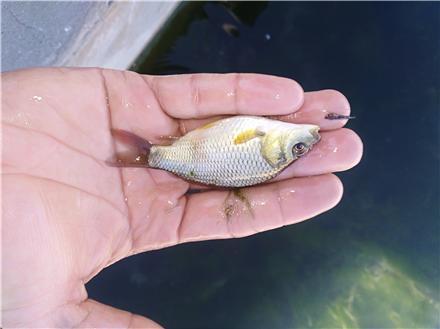Recently, in many developed and developing societies, the consumption of food supplements derived from natural sources has become popular due to the lack of side effects, low price and antioxidant properties in order to prevent and treat many diseases. Microalgae contain a wide variety of beneficial compounds, including essential amino acids, minerals, unsaturated fatty acids, and dietary fiber. They are also known as strong destroyers of free radicals. Undoubtedly, with the increase in the world’s population, the threat to the provision of food resources will become more serious and the food security for many classes of people will also decrease. Therefore, food and agriculture organizations related to the United Nations stated that food supply in agricultural production and healthy food supply solutions can be used as one of the best options in order to meet the need.
The World Health Organization has called spirulina a super nutrient. Spirulina is also considered a “Superfood” by the World Health Organization. Its cells are rich in protein up to 28% by dry weight content and have been used by indigenous peoples of Mexico and Africa since 1950. It is also an excellent natural source of essential fatty acids and vitamins B12, B2, B1, A and useful pigments such as xanthophyll and carotenoids, so that the consumption of one spoon (7 grams) of spirulina dry matter contains approximately 4 grams of protein, 1 gram of fat including fatty acids. Unsaturated such as omega 3 and omega 6 fatty acids are 11%, 15% and 4% of the daily requirement of vitamin B1, B2, B3, respectively, as well as 21% and 11% of the daily requirement for copper and iron, respectively. By making a simple comparison between the compounds in spirulina and the commonly used beneficial foods, one can realize the high richness of the compounds of this microalgae.
It has been reported that spirulina contains 670% protein compared to soy cheese, up to 180% calcium compared to milk, up to 5100% iron compared to spinach and 3100% compared to carrots. In addition, various other minerals such as magnesium, manganese and potassium have been reported in low amounts in spirulina food supplements. Studies have shown that consumption of spirulina is associated with balancing effects on cholesterol, low-density lipoprotein, triglycerides, blood pressure, and blood sugar. It is also reported that spirulina supplement increases the hemoglobin level of red blood cells in the elderly and improves their immune system. Spirulina is rich in gammalinoleic acid and phycobili protein. Gammalinoleic acid is a nutritious non-essential unsaturated fatty acid, whose medicinal value has been studied in various fields, such as: reduction of low-density lipoproteins in patients with hypercholesterolemia, reduction of symptoms in patients with menstrual syndrome and atopic eczema. Selective destruction of tumor cells without harming healthy cells has been proven to improve patients with schizophrenia, multiple sclerosis, dermatitis, diabetes and arthritis. The phycobili protein in spirulina can be used as an anti-cancer and anti-tumor drug due to its ability to absorb free radicals. It is said that spirulina is a good candidate for providing nutrients and minerals for women during pregnancy and breastfeeding, and even to eliminate malnutrition in children. Spirulina strengthens digestive functions and maintains intestinal bacteria.
It should be noted that spirulina is used in cookies, dry sweets, noodles and other food products. According to what has been mentioned about the beneficial properties of spirulina, astronauts of the National Aeronautics and Space Organization (NASA) should use spirulina as an ideal food for their space travel to provide a wide range of nutrients needed by the body in a small amount.
In the following, we provide an example of the use of spirulina algae as a food supplement in aquaculture in order to familiarize those interested with the properties of spirulina as a food supplement.
Spirulina as a food supplement for aquatic animals
Usually, in order to increase production per unit area, aquatic animals are raised in closed environments such as pools and cages with high density; this excessive density causes negative effects on aquatic health such as increased susceptibility to diseases. Recently, the use of immune stimulants in aquaculture has become common to strengthen the non-specific immune system and create resistance against diseases, and they have been introduced as a suitable alternative to antibiotics. Some studies have shown that the use of dried algae as an immune stimulant in the aquaculture industry improves physiological responses to stress and disease. Dried algae as a food supplement in aquaculture has increased growth, food efficiency and biochemical quality. Spirulina is one of the blue-green algae that contains a large amount of protein, essential fatty acids (gamma-linolenic acid), polysaccharides, phycobili proteins, beta-carotenoid, vitamins and minerals. Spirulina platensis is one of the green algae. – It is water that can be found in different environments, especially salty and brackish waters. This algae is known for its high amount of protein, vitamins, minerals, essential amino acids, fatty acids and antioxidant pigments such as beta-carotene and because of the absence of Cellulose in its structural composition and low amount of nucleic acid is easily digested and absorbed in the body. Also, due to the presence of phycocyanin, vitamin B12, phenolic acids and tocopherols, it has been reported to increase the digestion of fats and prevent the oxidation of fats. Therefore, spirulina algae is considered as a probiotic and immune system enhancer in fish.

Immunity in fish, like other vertebrates, manifests itself in two specific and non-specific ways. The non-specific immune system consists of two parts of cellular immunity and humoral, where lysozyme and complements are among the defense molecules of the humoral of the non-specific immune system. Lysozyme is present in many vertebrates and is one of the defense factors against pathogens. Lysozyme is released by white blood cells and is found in mucous secretions, gills, kidney tissues, spleen, digestive system and blood serum. . Lysozyme acts on the peptidoglycan components of the cell wall of microorganisms. While some bacteria are directly lysed by lysozyme. In most cases, the outer membrane of the bacterial cell wall must be torn by complement to allow lysozyme to enter. Complements are one of the most important defense factors that consist of about 35 proteins soluble in plasma and play a key role in innate and acquired immunity. The complement system is activated by two different but converging pathways, which include the immunoglobulin-dependent pathway or the classical pathway. It is independent of immunoglobulin or sub-pathway. The classical method is activated when target cells are coated with antibodies and destroys the target cell membrane. The alternative method is activated by private agents such as bacterial toxins, polysaccharides, zymogens, etc. Many immunostimulants increase complement activity in fish serum.

Benny fish belongs to the carp family and belongs to the genus Barbinae. Beni fish is one of the commercial fishes of Khuzestan wetlands, which is of great importance for breeding among native fish due to its relatively suitable growth, tolerance to adverse environmental conditions with high resistance in stagnant and warm waters with low oxygen levels, and also high economic value. Bani fish is particularly popular among the residents of the south and southwest of Khuzestan province and is considered as one of the important sources of protein needed by the people of these regions. This species is distributed in limited areas of the world, its main habitat is in the province. Khuzestan is Horulazim and Shadgan wetlands.
The reception of producers for breeding, the increase in consumer demand, the decrease in the amount of catch from inland waters and the need to rebuild the reservoirs have significantly increased the need to produce this fish through aquaculture compared to the past. This research also aims to investigate the effect of levels Various spirulina nutritional supplements were performed on some parameters of the non-specific immune system, including complements and lysozyme activity levels of fingerling fish.

According to the results of the research that was done on the diet of fish with spirulina algae, it was found that the use of spirulina algae in the diet of benny fish can improve the safety parameters of benny fish and at the level of 10% in breeding conditions in the diet. The food of this fish is recommended.
Those interested in the production and breeding of spirulina can contact the team of Roya Algae Pars and learn closely about the production line of this unique algae.










